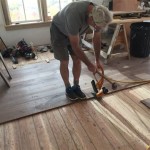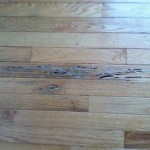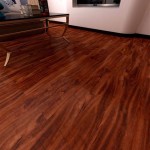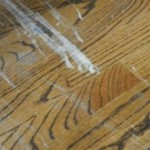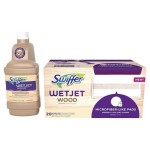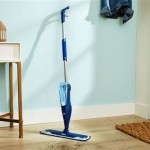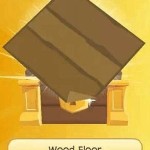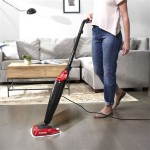Rugs with Rubber Backing on Wood Floors: A Practical Guide
Wood floors are renowned for their beauty and durability, but they can also be susceptible to scratches, dents, and wear and tear, especially in high-traffic areas. Placing rugs on wood floors not only adds a layer of protection but also enhances the aesthetic appeal of the space. However, choosing the right rug, particularly the backing material, is crucial to ensuring both functionality and longevity. Rugs with rubber backing are increasingly popular for wood floors due to their ability to provide stability, prevent slipping, and protect the underlying surface.
Benefits of Rubber Backed Rugs on Wood Floors
Rubber-backed rugs offer numerous advantages over traditional rugs with felt or woven backings, particularly when placed on wood floors. These benefits include:
1. Enhanced Stability and Grip:
Rubber backing provides superior grip and stability compared to other backing materials. The textured surface of rubber creates a strong bond with the smooth wood floor, preventing the rug from shifting or sliding, even during high foot traffic. This is especially important in areas where people tend to move quickly, like hallways or kitchens.
2. Protection Against Scratches and Dents:
The rubber backing acts as a protective barrier between the rug and the wood floor. It absorbs the impact of furniture legs and high heels, preventing scratches, dents, and potential damage to the delicate wood finish. This is crucial for protecting valuable hardwood or engineered wood floors.
3. Reduced Noise and Vibration:
The rubber backing acts as a sound dampener, effectively reducing the noise of footsteps and furniture movement. This creates a more peaceful and comfortable environment in the room, especially beneficial in areas like bedrooms or living rooms where noise can be disruptive.
Choosing the Right Rubber-Backed Rug
When choosing a rubber-backed rug for your wood floor, consider the following factors:
1. Rug Material:
The material of the rug itself plays a significant role in its overall performance and durability. Natural fibers like wool, cotton, or jute are known for their luxurious appearance and resilience, while synthetic fibers like nylon or polyester offer greater durability and stain resistance. Choose the material based on the intended use of the rug, the level of foot traffic, and your budget.
2. Rubber Backing Type:
Not all rubber backings are created equal. Some types are more durable or offer greater grip than others. Look for a rug with a thick, high-quality rubber backing that is specifically designed for wood floors. Avoid thin or flimsy backings, as they may not provide adequate protection or grip.
3. Size and Shape:
The size and shape of the rug should complement the room and the layout of your furniture. Ensure the rug is large enough to cover the desired area without being too overwhelming. Consider the shape of the room and the placement of furniture when making your decision.
4. Cleaning Instructions:
Check the cleaning instructions for the rug before purchasing. Rubber-backed rugs are generally easy to clean, but it's essential to use a vacuum cleaner with appropriate settings and follow the manufacturer's recommendations for spot cleaning or professional rug cleaning.
Maintenance and Care of Rubber-Backed Rugs on Wood Floors
Proper maintenance is key to prolonging the lifespan and maintaining the appearance of your rubber-backed rug. Follow these simple tips:
1. Regular Vacuuming:
Vacuum your rug regularly to remove dirt, dust, and debris. Use a vacuum cleaner with a brush attachment to lift the fibers and prevent dirt from becoming embedded in the rug. Avoid using a beater bar attachment on delicate rugs, as it can damage the fibers.
2. Spot Cleaning:
Treat spills and stains promptly to prevent them from setting in. Use a mild detergent or cleaning solution specifically designed for rugs, and blot the stain gently with a clean cloth. Avoid rubbing the stain, as it can spread and damage the rug's fibers.
3. Rotate Regularly:
Rotate your rug periodically to distribute wear and tear evenly. This will help maintain a consistent appearance across the entire rug and prevent areas of high foot traffic from becoming more worn than others.
4. Professional Cleaning:
Have your rug professionally cleaned every 12-18 months to remove deep-seated dirt and allergens. A professional rug cleaner can utilize specialized equipment and cleaning solutions to thoroughly clean and restore your rug to its original condition.
In conclusion, rugs with rubber backing are a practical and aesthetically pleasing choice for wood floors. They offer superior stability, protection against damage, and noise reduction while enhancing the overall look of the space. By carefully selecting the right rug and adopting appropriate care practices, you can enjoy the benefits of these versatile floor coverings for years to come.

Rubber Backing Rugs Harm Flooring Icork Floor

Are Rubber Backed Rugs Right For Your Floors Rugpadusa

How To Remove Deteriorated Rug S Latex Backing Stuck On Hardwood Flooring Between Naps The Porch

How To Remove Deteriorated Rug S Latex Backing Stuck On Hardwood Flooring Between Naps The Porch

Contour Lock Rugpadusa

How To Remove Deteriorated Rug S Latex Backing Stuck On Hardwood Flooring Between Naps The Porch

How To Remove Deteriorated Rug S Latex Backing Stuck On Hardwood Flooring Between Naps The Porch

Non Slip Rubber Backing The Rug Collective

Superior Lock 7 16 Rugpadusa

How To Remove Deteriorated Rug S Latex Backing Stuck On Hardwood Flooring Between Naps The Porch
